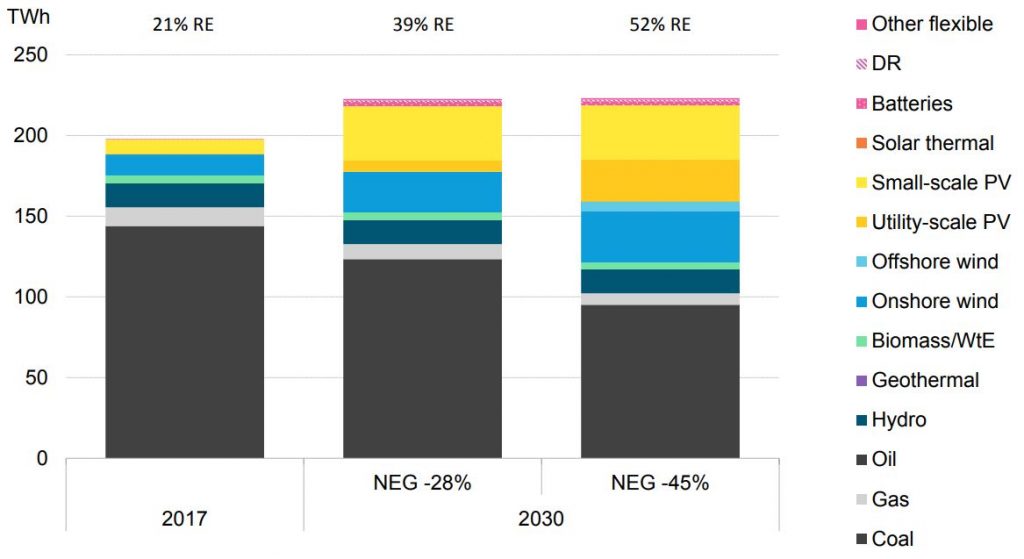The Turnbull Government’s National Energy Guarantee could deliver reliable, low-emissions electricity supply for Australia’s National Electricity Market. But the outlook for renewable energy depends squarely on the ambition of the emission reduction target. The government’s -28% by 2030 target could decimate large-scale wind and solar construction, whilst Labor’s -45% (2-degree pathway) would continue the current boom.
National Energy Market (NEM) generation mix

Source: Bloomberg New Energy Finance. Note: RE = renewable energy generation
- The government’s current 28% below 2005 levels by 2030 CO2 target would slow the current pace of renewable installations and emissions reduction in the National Electricity Market (NEM) and requires little effort to achieve. Existing policies should deliver a 23% reduction by 2020, and small-scale PV uptake should do most of the heavy lifting thereafter, bringing renewable generation to 39%. But only 1.5GW of new large-scale renewables will be required from 2021-30 to meet this Emissions Guarantee target.
- A 45% reduction on 2005 levels by 2030 by contrast would require 17.3GW of large-scale renewables in the next decade and lift renewable generation to 52%. This would continue the current pace of emissions reductions from existing policies in the NEM.
- The Reliability Guarantee is unlikely to give windfall gains to coal, if it is designed to ensure there is enough dispatchable capacity only. Around 6GW of coal is forecast to close and be replaced by 5GW of gas in either scenario, with our assumed policy configuration. However the Reliability Guarantee will likely prevent further coal closures under a deeper emissions reduction target, ensuring the system remains stable whilst reducing emissions and coal burn.